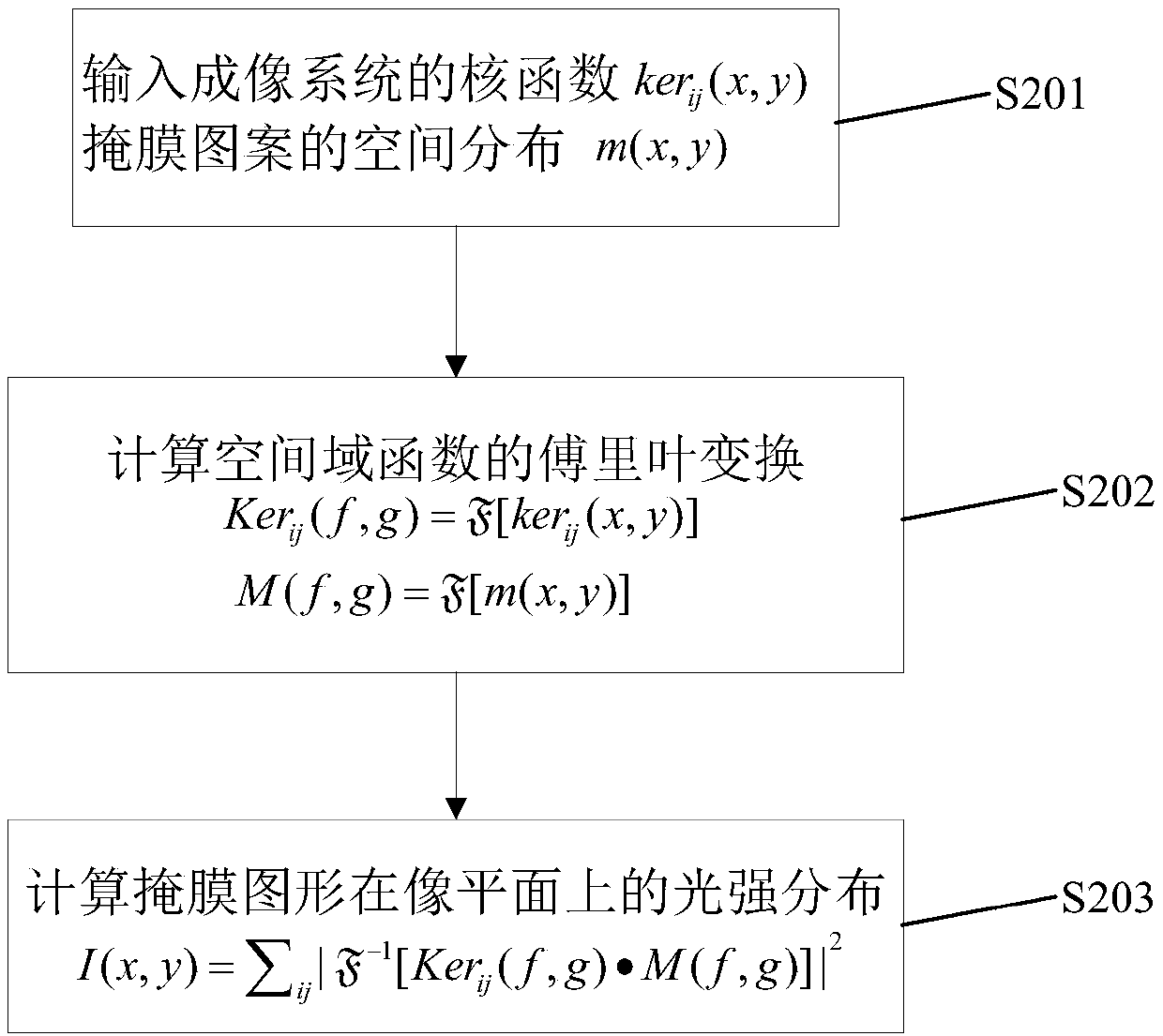Indicator function-based fast decomposition method for cross transfer function
A technology of indicator function and transfer function, which is applied in the direction of complex mathematical operations, photolithography exposure devices, micro-lithography exposure equipment, etc., can solve the problem of affecting the efficiency of lithography process design, the efficiency of affecting the calculation of light intensity distribution, time-consuming, etc. problems, to meet the requirements of lithography process design, fast and efficient calculation of light intensity distribution
- Summary
- Abstract
- Description
- Claims
- Application Information
AI Technical Summary
Problems solved by technology
Method used
Image
Examples
Embodiment
[0035] Based on the imaging theory of Hopkins diffractive optics, the formula of imaging light intensity distribution function is as follows:
[0036]
[0037] Among them, i is the imaginary number unit, M(f,g)=F[m(x,y)] is the two-dimensional Fourier transform (FFT, Fast Fourier Transform) of the spatial distribution of the mask plate, and TCC is the corresponding four-dimensional cross transfer function , which is defined as:
[0038] TCC(f 1 , g 1 ; f 2 , g 2 )=∫∫J(f,g)·P(f+f 1 ,g+g 1 )·P * (f+f 2 ,g+g 2 )dfdg (2)
[0039] Among them, J(f,g) is the light source function, P(f,g) is the pupil function of the imaging system, P * (f, g) is the complex conjugate of P(f, g) of the pupil function, expressing the optical parameters of the optical imaging system. According to Cobb's decomposition algorithm, there is a singular value decomposition of TCC as follows:
[0040]
[0041] Among them, Ker i (f, g) is the kernel function of TCC, then the light intensity d...
PUM
 Login to View More
Login to View More Abstract
Description
Claims
Application Information
 Login to View More
Login to View More - R&D
- Intellectual Property
- Life Sciences
- Materials
- Tech Scout
- Unparalleled Data Quality
- Higher Quality Content
- 60% Fewer Hallucinations
Browse by: Latest US Patents, China's latest patents, Technical Efficacy Thesaurus, Application Domain, Technology Topic, Popular Technical Reports.
© 2025 PatSnap. All rights reserved.Legal|Privacy policy|Modern Slavery Act Transparency Statement|Sitemap|About US| Contact US: help@patsnap.com



